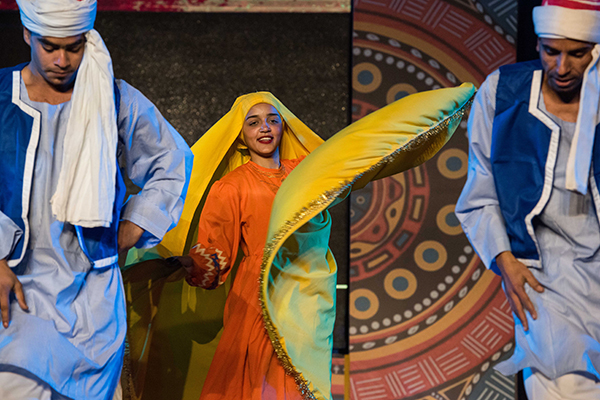 |
|
Local dancers perform at the seventh edition of the Aswan International Festival for Culture and Arts on Feb 17 in Egypt. [PHOTO BY MENG TAO/XINHUA] |
ASWAN, Egypt-Egypt's Aswan province, known as "the jewel of the Nile River", is inviting Chinese tourists to enjoy its unique archaeological and cultural sites, according to Aswan governor, Ahmed Ibrahim.
"Aswan's gates are always open for Chinese tourists and we would like them to visit and see the high level of security and safety in Aswan, as well as the love, respect and warm welcome of its people," Ibrahim says.
Tourism in Egypt has started to recover after years of security worries and a recession caused by the political turmoil that followed the ousting of two heads of state in 2011 and 2013.
Before that, in 2010, the tourism sector in Egypt drew about $13 billion in revenues from around 14.7 million tourists visiting the country.
As for Chinese tourists, their number saw a gradual increase from around 135,000 in 2015 to 160,000 in 2016 before almost doubling to over 300,000 in 2017.
It makes China the fourth largest provider of visitors to Egypt according to official Egyptian and Chinese reports.
"The number of tourists coming from Asia, particularly from China, to visit Aswan has greatly increased this year," Ibrahim notes. "We hope that the numbers will rise every year."
The Egyptian governor says that the occupancy rate of Aswan hotels has reached 100 percent, "as there are no vacant rooms at the moment".
The Egyptian province recently hosted the seventh edition of the Aswan International Festival for Culture and Arts, which gathered more than 20 folk bands and traditional art groups from around 13 countries, one of which was China's Shaolin Kung Fu group.
Shaolin kung fu, also called Shaolin Wushu, is one of the oldest and most famous styles of Chinese martial arts, which originated and developed at the Shaolin Temple in central Henan province.
The Chinese Shaolin kung fu masters, dressed in light gray robes and black belts, performed professional, skillful and synchronized martial arts moves during the festival, demonstrating animal-like fighting styles, such as those of the snake, tiger and monkey.